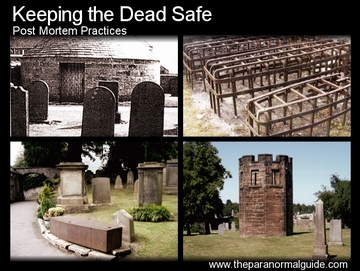
How could you keep your dead safe from these nefarious fellows?
Horrid Bodysnatchers!
 Cemetery watchtower, Dalkeith.
Cemetery watchtower, Dalkeith. However, as the numbers of medical students were rising each year, there was always a calling for more bodies. Soon several schools secured the rights to all bodies born from executions in certain towns and cities, and with most other people wanting their bodies placed firmly in the ground, where could they obtain bodies to dissect in front of students?
There are always people out there wanting to make money, no matter the job, and soon a new career path opened for some – Body Snatching. These quite ghastly people saw a demand for a product, and knew where to source it – cemetery and graveyards.
In the dead of night the snatchers would wander the resting places of the dead, in order to locate fresh graves. Upon finding one, they would spend a large portion of the night digging it up, removing the body, then carting it off to a place where they could exchange it for money. The Anatomy Schools were more than happy to pay good sums of money to the snatchers, and of course, were always on the look out for more.
Soon the trade grew to such a size that snatchers in England and Scotland were paid to steal bodies, and send them via ship overseas. Fights in cemeteries between snatchers was not too uncommon, everyone was after the freshest corpses, and if you saw someone making a steal on something you had claimed, you wanted to make them pay.
The authorities caught onto this trade quite early, but turned a blind eye. It was a necessity for the understanding of our bodies and the training of future medical practitioners. The authorities went as far as to cover up many of the incidences of grave snatching, in order to prevent the public coming to outrage.
Public Outrage!
 Iron Coffin.
Iron Coffin. The outrage hit hardest in Scotland, where veneration of the dead and resurrection was a common belief in the masses. If a body was defiled, it would resurrect incomplete, and this can not be a good thing.
With the authorities doing their best to allow the trade to continue, although every now and then they would execute someone for the crime, almost as a token measure to keep the public happy, it fell to the citizens to find ways to protect their dead.
At first, those who could not afford a more permanent measure of protection would place pebbles on their relative’s graves. If the pebbles were found to be disturbed, it was a clue the grave may now be empty (much of the time the snatchers would refill the grave in order to hide the fact they had robbed it.).
Soon enough, contraptions were designed in order to prevent the disturbance of a grave. These could be as simple as a heavy coffin shaped rock placed on top of the burial, in order to prevent those digging under it. Iron coffins were also sometimes employed, but only by those with the money to afford it.
Keeping the Dead Safe
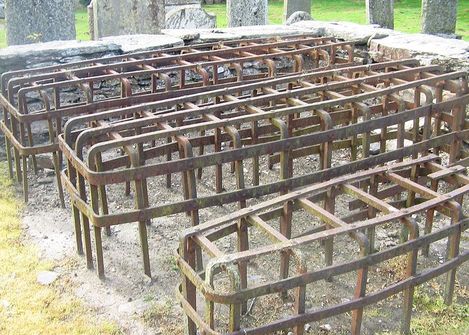 Mortsafes.
Mortsafes. At times the coffin would be affixed in the cage and buried.
Not everyone could afford these measures to protect their loved ones remains, and soon grave watch groups were created. Members of the community would, in groups, volunteer their time to patrol the resting places of the dead, to catch out the snatchers. Some communities even constructed watch towers in the cemeteries, so a 360degree view of the cemetery could be monitored from up high.
Some communities pooled their money to buy several safes and iron coffins, to hire out to those who could not afford one outright – the schools were only after fresh corpses, so using a safe to prevent the snatchers coming near for a month or so was sufficient to keep their loved ones remains safe – the decomposition during that time would mean the body was no longer sought after.
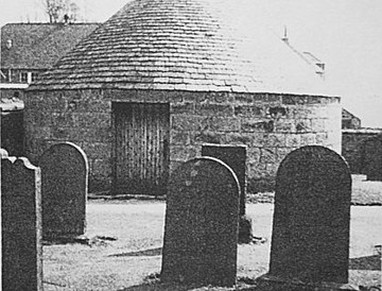 Morthouse with turntable within.
Morthouse with turntable within. One rather ingenious Mort House, found in Udny Green, Aberdeenshire, Scotland, was a round stone building which contained a heavy wooden and studded outer door, and a even heavier inner iron door. Within the round building was a turntable that could accommodate seven coffins. A coffin containing a body would be placed on the turntable, when another came along, the turntable would be rotated to accommodate it. Over time the house would fill up and when the first body made its way around the door, it will have decomposed sufficiently to be safely buried.
Although today these measures are no longer needed in most parts of the world, these body securing devices can still be found, relics of that age. However, not all cemeteries will keep a body safe, as although fresh corpses are generally obtained through legal measures, it is bones that are sometimes sought in places around the world.
But that's another post for another time.
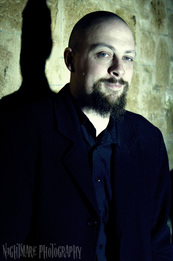



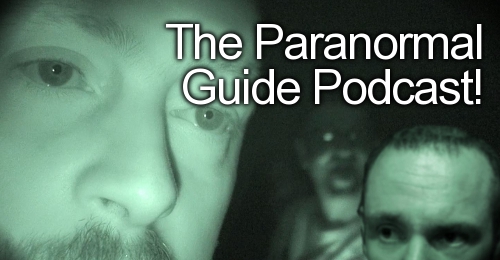
 RSS Feed
RSS Feed
